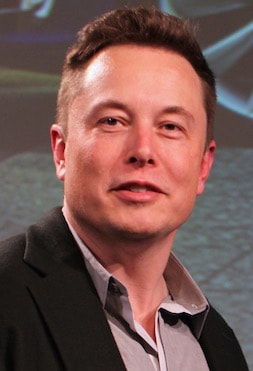Business writing tends to be sloppy, crappy, and confusing. Have you noticed that some people don’t have time for that, because they are in a hurry to change the world’s transportation and energy infrastructure, while also going to Mars? Elon Musk posted the his Master Plan, Part Deux, following up on his earlier “secret master plan” from 10 years ago:
So, in short, the master plan is:
- Build sports car
- Use that money to build an affordable car
- Use that money to build an even more affordable car
- While doing above, also provide zero emission electric power generation options
Don’t tell anyone.
Here’s the summary of the new master plan:
So, in short, Master Plan, Part Deux is:
Create stunning solar roofs with seamlessly integrated battery storage
Expand the electric vehicle product line to address all major segments
Develop a self-driving capability that is 10X safer than manual via massive fleet learning
Enable your car to make money for you when you aren’t using it
Here’s the first paragraph of the product line expansion part of the plan:
Expand to Cover the Major Forms of Terrestrial Transport
Today, Tesla addresses two relatively small segments of premium sedans and SUVs. With the Model 3, a future compact SUV and a new kind of pickup truck, we plan to address most of the consumer market. A lower cost vehicle than the Model 3 is unlikely to be necessary, because of the third part of the plan described below.
I’m not hear to discuss the merits of the plan (happy to do that over a glass of wine). I want to talk about the writing.
In a world of business (and political) writing that hides facts, obscures the truth, and obfuscates meaning, Musk’s writing is clear and direct. I don’t have to wonder what it really means. He talks about combining Tesla and SolarCity without once using the word “synergy”.
Create a smoothly integrated and beautiful solar-roof-with-battery product that just works, empowering the individual as their own utility, and then scale that throughout the world. One ordering experience, one installation, one service contact, one phone app.
(OK “empowering” is jargon– he could have written “making the home its own utility”, but I still get it.)
Contrast this vision with Steve Ballmer’s last shareholder letter about what Microsoft was up to:
We are uniquely positioned to lead in these areas given the breadth of our devices and services portfolio, as well as our large, global partner and customer base and the growing Windows ecosystem.
It truly is a new era at Microsoft — an era of incredible opportunity for us, for the 8 million developers building apps for our devices, for the more than 640,000 partners worldwide and, most important, for the people and businesses using our products to reach their full potential.
What does this actually mean? Other than the numbers, it doesn’t say much. Of course, I could just be cherry-picking examples to make my point, so go read each document (they’re not very long). Microsoft does have a more complex business than Tesla, in terms of product and customer breadth, but that should force them to think and expound a clearer vision, not a murkier one.
It’s easy to pick on writing, but I suspect, without being inside the head of either billionaire, that Musk’s thinking is clearer. It’s not that he’s a better writer. It’s that he has a place he wants to go. He’s figured out the steps he needs to take to get there. And he’s written those steps down clearly. Now, everyone inside and outside the company knows the plan. How useful is that for getting employees to make the right choices with less micromanaging? When things aren’t clear at the top, how can they be clear for executives, managers, and rank and file employees? How much productivity do you lose?
If you’re reading this, chances are you’re not a billionaire looking to polish your vision statements. (Elon, drop the passive voice and you’re all set.) However, you have to communicate with your employees, your customers, and your prospects. What I see over and over in proposals that aren’t compelling (and don’t win at above average rates**) is terrible business writing, because no one knows the real story. People tell me they are not good writers. That may be true, but the problem isn’t the writing of the story. It’s the story. If you know the story, you can write it. Heck, you can say it, and then write it down, if that’s easier. Dictate it to Siri if that’s better for you.
Just have a clear story, then tell it simply, the way you would if you were catching up with a friend. “Here’s what we’re up to– we’re going to Mars…” Or, “Here’s what we’re up to– we’re upgrading your legacy server…” Don’t hide behind fancy words. And if you’re stuck, you probably don’t have writer’s block, you have “thinker’s block”– you don’t know what the story should be. If your proposal has 2 pages of “we are a leading-edge innovative firm that constantly strives to exceed your expectations…” simply delete those pages. 😉
So go ask your prospect and have them flush out the story for you. How great is that?
** If your typical deal involves 2 other competitors and you don’t know how to differentiate, the average win rate for all companies involved is 1/3, to a first approximation. (Of course, there’s usually some level of differentiation, sometimes the prospect opts to stick with the status quo, etc, but as a general mathematical model, this a reasonable place to start.) I’ve seen companies go from these situations, with ~30% win rates and lots of pricing pressure, to over 90% win rate and little pricing pressure. (It’s good to compete against crappy proposals.) Business writing is an under-appreciated secret weapon– find it, use it well.

